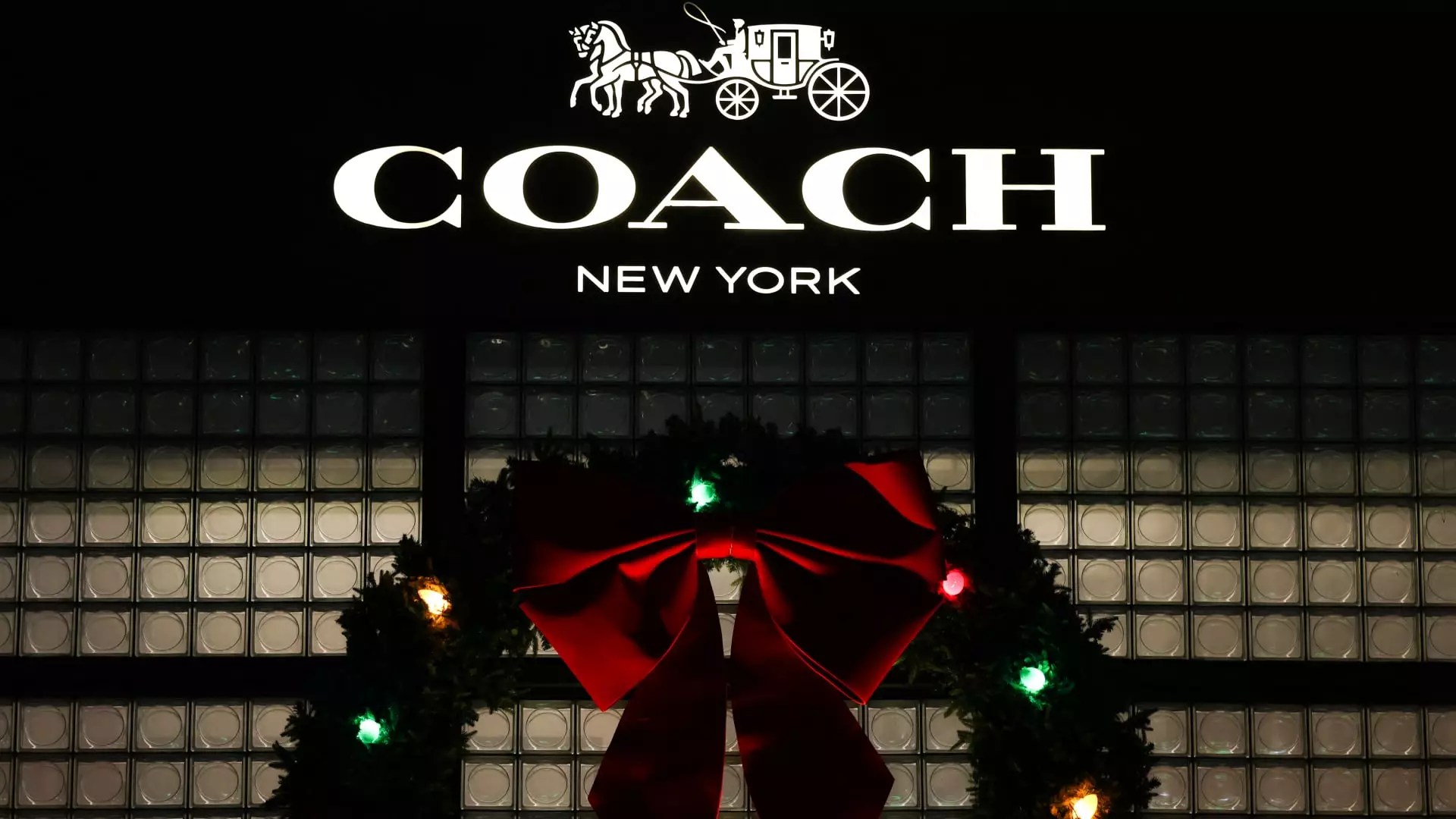The latest quarterly report from Tapestry, the parent company of the renowned Coach brand, has sparked a significant rise in stock value, demonstrating the company’s robust positioning in an unpredictable retail landscape. Following a holiday quarter that exceeded expectations, Tapestry is making headlines not only for its financial performance but also for its strategic maneuvers amidst challenges faced by rivals in the luxury goods market.
The company’s shares surged by approximately 12% on a recent Thursday, propelled by a holiday-season revenue exceeding analysts’ projections. Tapestry has forecasted more than $6.85 billion in revenue for the fiscal year, signaling a 3% increase from the previous year. The anticipated earnings per share of $4.85 to $4.90 also showcases a positive shift from earlier forecasts of $6.75 billion and earnings per share within the range of $4.50 to $4.55. This recalibration reflects Tapestry’s confidence in its operations and market adaptability.
Interestingly, this financial optimism arises from a backdrop of corporate turbulence, particularly a recent failed merger with Capri Holdings, owner of luxury brands like Michael Kors and Versace. The merger, which would have consolidated two major players in the luxury retail space, was ultimately abandoned after numerous legal challenges. Such upheaval reflects the volatility inherent in the luxury market, making Tapestry’s positive results even more noteworthy.
While Tapestry celebrates its successes, its competitor Capri is grappling with disappointing sales, particularly in the luxury accessory segment. Sales at Versace and Michael Kors saw declines greater than 10% during the same holiday quarter. This disparity highlights the contrasting strategies employed by both firms. According to Capri’s CEO, John Idol, the company’s difficulties stem from misguided choices, including the decision to limit lower-priced accessories aimed at attracting a diverse customer base.
The stark differences in performance may also suggest that Tapestry is resonating more effectively with consumers who continue to be discerning with their expenditure. Emphasizing innovation and value, Tapestry’s brands, particularly Coach, have managed to secure consumer loyalty.
Tapestry’s ability to connect with shoppers, especially younger demographics like Gen Z and millennials, has been central to its success. In an earnings call, Tapestry CEO Joanne Crevoiserat pointed out that the company welcomed approximately 2.7 million new customers in North America during the holiday quarter, with more than half from these younger age groups. This demographic shift indicates a renewal of interest in Tapestry’s offerings, as evident from the popularity of products such as the Tabby shoulder bag and the new New York collection.
Strategically, Tapestry is conscious of the current retail climate, remaining cautiously optimistic amid a broader examination of consumer spending patterns. The company has articulated a commitment to maintaining its brands’ distinctiveness without resorting to excessive discounts, focusing instead on popular styles and targeted customer acquisition strategies.
Looking forward, Tapestry is setting its sights on international markets, particularly Europe and China, which currently present significant growth potential. While the company’s primary revenue source remains North America, the recent 45% revenue spike in Europe during the holiday period suggests that expanding deeper into this market could yield fruitful outcomes. Conversely, Japan, which saw a 5% decrease in sales year-on-year, highlights the uneven nature of recovery across regions.
Another crucial aspect of Tapestry’s strategic vision involves a careful nurturing of its brands. The recent appointment of Eva Erdmann, a former L’Oréal executive, to lead Kate Spade indicates an intent to revitalize the brand through streamlined offerings. By reducing the range of handbag styles and shifting focus towards creating iconic “blockbuster” collections, Tapestry hopes to solidify Kate Spade’s identity and drive its growth sustainably.
Tapestry’s recent financial results and strategic initiatives position the company strongly within the luxury goods market. Its ability to adapt to consumer preferences, coupled with a targeted focus on brand enhancement rather than price-driven competition, presents a hopeful outlook. As Tapestry navigates the complexities of the retail landscape, it remains poised to harness its current momentum while preparing for new opportunities in both established and emerging markets. The engaging narrative of Tapestry stands as a testament to how companies can effectively realign with market dynamics—even amid setbacks from rival firms.


Leave a Reply